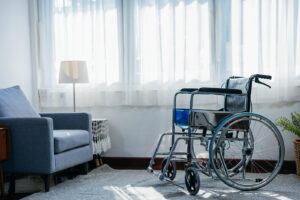
Room Design: Assisted Living Saraland AL
Comfort is one of the most important factors for people when they choose a place to live. Sure, proximity to their job, school, community activities, or even public transportation may be high on the list, but nobody wants to live in a place that is uncomfortable. That’s why so many people hang pictures, paintings, or place furniture strategically in each room: comfort.
When an elderly person moves into an assisted living room, they also want to be comfortable. They may not fully appreciate the value of this elder care choice, but they certainly recognize the struggle they may have been facing with activities of daily life.
Now, the question of how to properly design an assisted living room has multiple factors to consider. First and foremost, they need to be clear on what expectations, rules, and accommodations are made by the facility itself.
Assisted Living Rules
Not all assisted living communities are the same. They are all run differently, even if they are owned by the same company. There might be different expectations with regard to how much personal furniture, the types of pictures they can bring, how many, and what they can hang on the wall, if anything.
When you’re talking about respite care services, though, such as staying at an assisted living facility room overnight where you are being picked up in the morning to return home is going to have much different rules with regard to furnishings and the things you can bring along with you. However, for those who are moving in full-time, here are a few things to consider.
Furnishings
Depending on the assisted living facility, the room might be relatively small. In that case, you want to maximize space by limiting the number of furnishings that are brought in. You also want to think about storage and how accessible certain items are for the senior at this facility.
For example, you don’t want to store items under the bed because that may be extremely difficult for somebody of advanced years to access. You also don’t want to store important, everyday items high up in cabinets, which would effectively force the senior to use a stepladder or even a chair to try and get to it.
Also think about the height of the mattress. If they struggle to get in and out of bed, you want to make sure that it is a little bit lower so they can ease in and out without too much difficulty.
As far as a couch or recliner is concerned, keep it simple and always check with the facility first.
Think About the Logistics
An older facility may have certain rooms that are not optimal for wheelchairs. If the senior uses a walker or wheelchair to get around, make sure they get a room that has ample coverage for not just getting into and out of the door easily, but for turning around or being mobile in that room.
Consider Lighting and Safety
Make sure that a phone is easily within reach, especially close to the bed. Make sure all alarms have flashing light options for those who are hearing impaired. Also try to choose a room that has plenty of natural light and, for those evening and nighttime hours, make sure there are plenty of lamps and other lighting options so they can stay safe all day and throughout every night.


Follow Us!